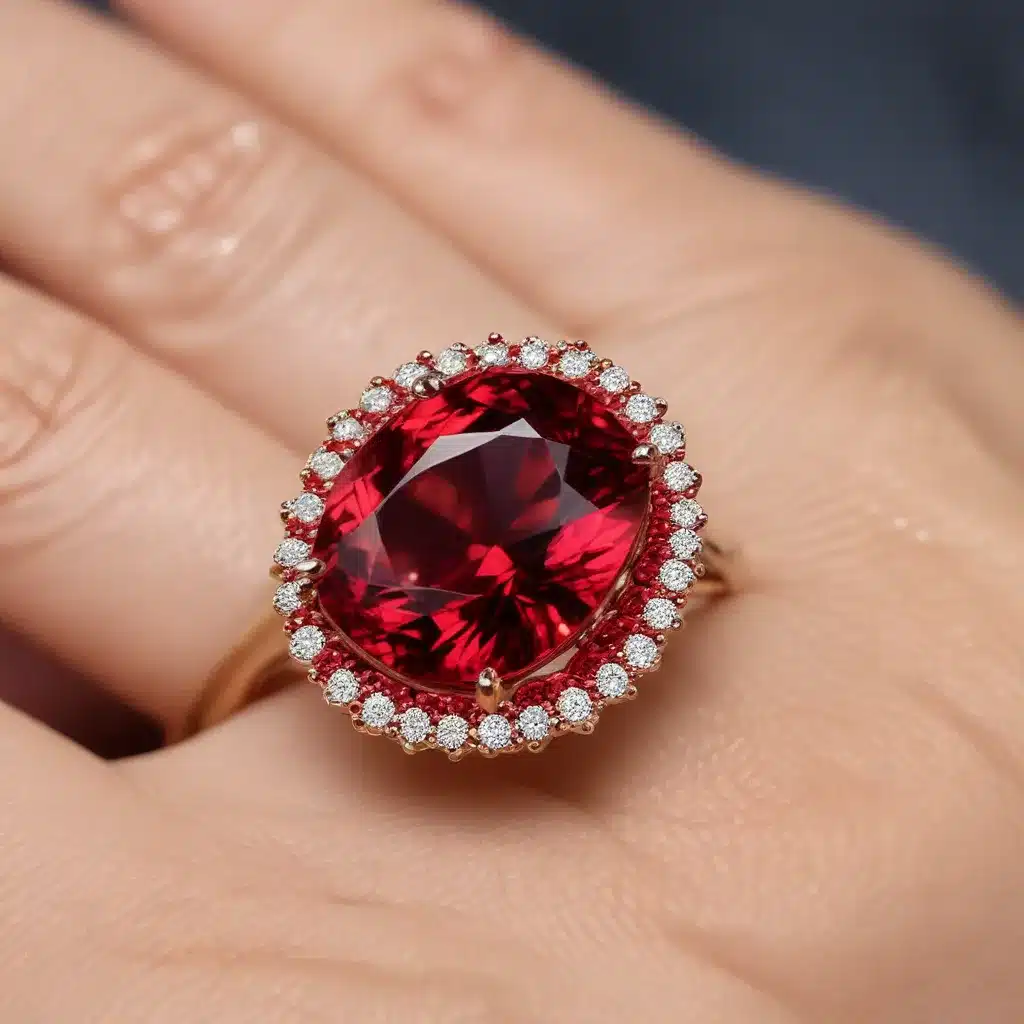
The captivating beauty and allure of natural gemstones have long captured the hearts and imaginations of jewelry enthusiasts worldwide. Among these treasures, the ruby stands as a particularly revered gem, prized for its rich, vibrant hue and unparalleled durability. However, the rarity and high cost of natural rubies have led to the development of innovative synthetic alternatives that seek to recreate the essence of this beloved gemstone.
Synthetic Gem Production
Gemstone synthesis, the process of artificially creating gemstones in a laboratory setting, has advanced significantly in recent decades. Through controlled environments and carefully refined techniques, scientists and researchers have been able to produce synthetic versions of a wide range of precious stones, including rubies.
Processes for Gemstone Synthesis
The primary methods for producing synthetic rubies involve the use of either the flux-growth or the hydrothermal technique. In the flux-growth method, chemical compounds are heated to extremely high temperatures, allowing the ruby-forming elements to crystallize into the desired gemstone structure. Conversely, the hydrothermal approach utilizes pressurized, superheated water to facilitate the growth of ruby crystals under carefully monitored conditions.
Properties of Synthetic Rubies
Synthetic rubies, when expertly crafted, can be virtually indistinguishable from their natural counterparts in terms of their chemical composition, optical properties, and physical characteristics. These lab-grown gems often exhibit the same vivid red hue, exceptional hardness (on the Mohs scale), and high refractive index as their mined counterparts. Moreover, the absence of natural inclusions and imperfections can result in synthetic rubies with an exceptional degree of clarity and brilliance.
Applications of Synthetic Rubies
The availability of high-quality synthetic rubies has opened up a wide range of applications beyond the realm of jewelry. These engineered gemstones find use in various technological and industrial fields, such as laser components, electronic devices, and abrasive tools. Their consistent properties and reliable supply make them an attractive alternative to natural rubies in many specialized applications.
Natural Ruby Characteristics
To fully appreciate the significance of synthetic rubies, it is essential to understand the unique features and inherent value of natural rubies.
Composition and Formation
Rubies are a variety of the mineral corundum, composed primarily of aluminum oxide (Al2O3) with trace amounts of chromium, which impart the characteristic red coloration. These gemstones are formed deep within the Earth’s crust, where high temperatures and immense pressure facilitate the growth of ruby crystals over millions of years.
Optical Properties
Natural rubies are renowned for their exceptional optical properties, including a high refractive index, brilliance, and dispersion. The presence of natural inclusions and color variations within each ruby contributes to its unique character and individual charm, making every natural ruby a one-of-a-kind masterpiece.
Rarity and Value
The rarity of natural rubies, stemming from the challenging conditions required for their formation, is a key factor in their high value and desirability. Top-quality natural rubies are exceptionally scarce, with the most sought-after specimens originating from specific geographical regions, such as Myanmar (formerly Burma) and Afghanistan.
Comparison of Natural and Synthetic Rubies
While synthetic rubies can closely mimic the visual and physical properties of their natural counterparts, there are distinct differences that set them apart.
Distinguishing Features
Trained gemologists can often differentiate between natural and synthetic rubies through careful examination. Subtle variations in inclusions, growth patterns, and trace elements can serve as telltale signs. Additionally, advanced characterization techniques, such as spectroscopic analysis and infrared spectroscopy, can provide a more precise and definitive identification.
Market Implications
The availability of high-quality synthetic rubies has had a significant impact on the gemstone market. While natural rubies remain the most coveted and valuable, the affordability and consistent supply of lab-grown alternatives have made ruby-adorned jewelry more accessible to a broader consumer base. This shift has led to a reevaluation of the role and perception of synthetic gemstones in the jewelry industry.
Ethical Considerations
The mining and processing of natural gemstones can sometimes be associated with environmental and social challenges, such as labor practices and sustainability concerns. Synthetic rubies, on the other hand, offer a more controlled and potentially more ethical alternative, as their production can be closely monitored and regulated to minimize negative impacts.
Advances in Gemstone Synthesis
The field of gemstone synthesis continues to evolve, with researchers and manufacturers exploring new techniques and innovations to enhance the quality and accessibility of synthetic gemstones.
Novel Synthesis Techniques
Emerging methods, such as chemical vapor deposition (CVD) and plasma-assisted synthesis, have enabled the production of synthetic rubies with even greater precision, purity, and customization possibilities.
Characterization Methods
Advancements in gemological testing and analytical techniques have led to more accurate and reliable means of distinguishing natural from synthetic rubies. This includes the development of advanced spectroscopic tools, X-ray diffraction, and microscopic analysis methods.
Quality Control Measures
Synthetic gemstone manufacturers have implemented rigorous quality control measures to ensure the consistency and reliability of their products. This includes strict monitoring of growth conditions, comprehensive certification processes, and advanced traceability systems to maintain the integrity of the synthetic ruby supply chain.
The world of gemstones is one of captivating beauty, rich history, and technological innovation. As the allure of natural rubies continues to captivate jewelry enthusiasts, the development of high-quality synthetic alternatives has opened up new avenues for exploration and appreciation. By understanding the distinct characteristics and market dynamics of natural and synthetic rubies, consumers and industry professionals can make informed choices that align with their preferences, values, and the ever-evolving landscape of the gemstone industry.

